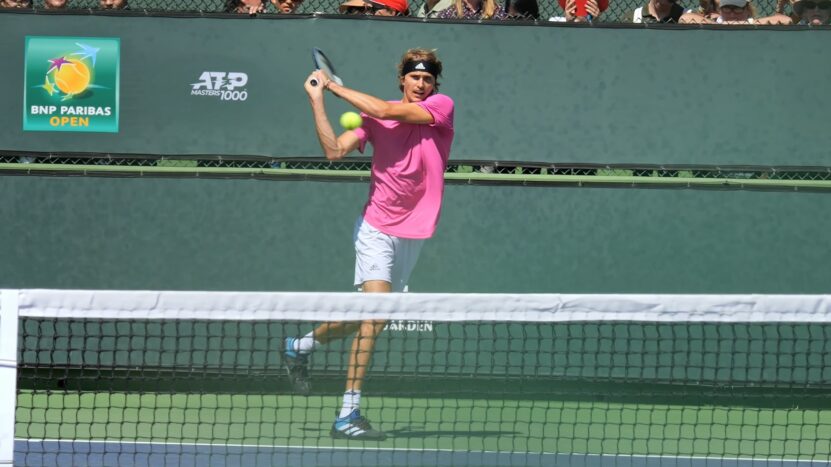The speed at which pro tennis players hit the ball has always been a subject of intrigue for both tennis enthusiasts and casual viewers alike. When you witness a lightning-fast serve or a powerful baseline shot, you can’t help but wonder, “Just how fast was that?”
Prepare for a fascinating journey through the world of tennis physics, training, and evolution.
The Evolution of Ball Speed in Tennis
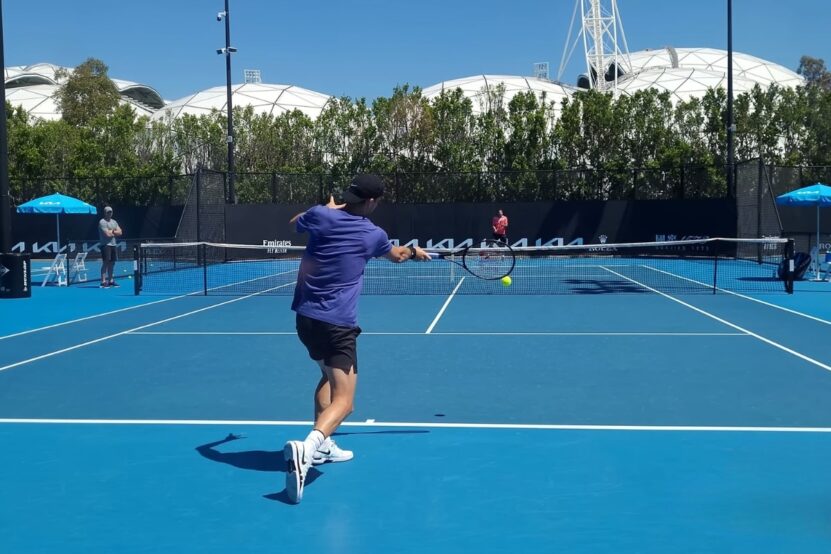
The game of tennis has evolved dramatically over the years. With advancements in racquet technology, training methods, and physical conditioning, today’s players hit the ball faster than ever before.
Racquet Revolution
Over the decades, racquet materials and designs have undergone significant changes. From wooden frames to graphite composites, the evolution of racquet technology has enabled players to generate more power without sacrificing control.
In turn, this has allowed players to hit the ball with increased velocity, especially during serves and groundstrokes.
Training Techniques and Physical Fitness
The modern tennis player is a true athlete. With rigorous training regimens that focus on strength, agility, and technique, players can generate immense power from their core, translating into faster ball speeds. It’s not just about raw power, though. Proper technique ensures that players can hit the ball cleanly, maximizing speed without compromising accuracy.
Breaking Down the Speeds
To understand the speed of pro tennis shots, it’s essential to dissect the various strokes and serves in the game.
The Mighty Serve
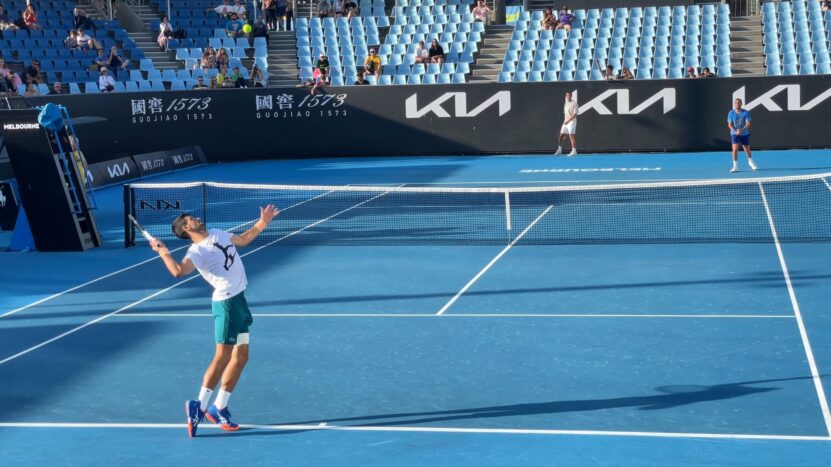
The serve is arguably the most powerful shot in tennis. Top male players have been known to serve at speeds upwards of 150 mph, while the fastest serves in women’s tennis hover around the 130 mph mark. Such speeds are achieved through a combination of technique, timing, and strength.
- Record Speeds: The fastest recorded serve in men’s tennis is 163.7 mph by Sam Groth, while the women’s record is held by Georgina Garcia Perez with a serve of 220 mph.
- Factors Influencing Speed: The height of the player, the point of ball impact, racquet head speed, and the angle of serve all play crucial roles in determining the final speed of the serve.
Groundstrokes and Volleys
While serves boast the highest speeds, groundstrokes (both forehands and backhands) and volleys also showcase remarkable velocity in professional tennis. Top male players often hit forehands at speeds above 90 mph, while backhands can range between 70-85 mph.
Comparative Speed Analysis
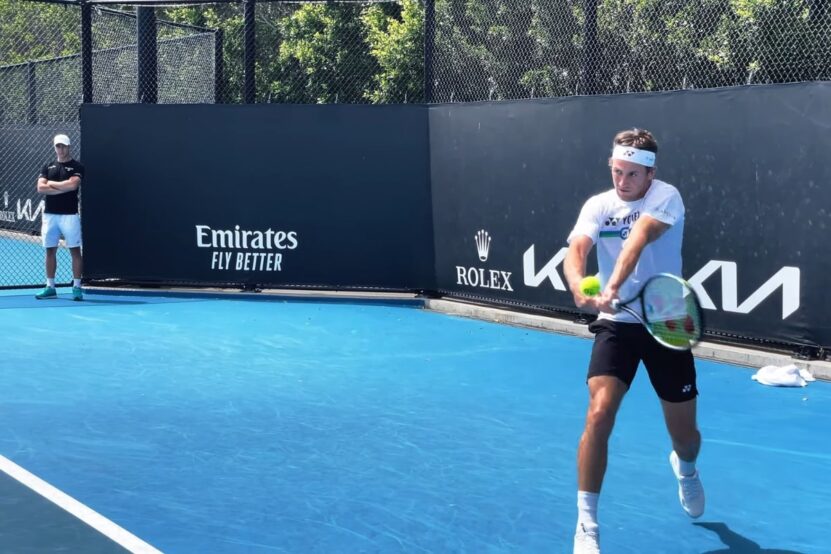
How do tennis ball speeds compare to other sports? This comparative analysis provides a fresh perspective on the raw power behind a pro tennis player’s shot.
Tennis vs. Baseball
Baseball, especially during a pitcher’s fastball, showcases incredible ball speeds. Major League pitchers often throw fastballs in the range of 90-100 mph. While these speeds are undeniably fast, top tennis serves still outpace them, making tennis one of the fastest ball sports in terms of sheer velocity.
Tennis vs. Golf
A golf ball hit by a pro golfer during a drive can achieve speeds of up to 180 mph, which is notably faster than the fastest tennis serves. However, it’s essential to note the differences in mechanics, equipment, and ball size when comparing the two sports.
Tennis vs. Badminton
While a badminton shuttle might appear slower than a tennis ball, in reality, smashes in professional badminton can reach speeds of up to 200 mph. This makes badminton smashes one of the fastest projectile speeds in any sport, outpacing even the fastest tennis serves.
Physics Behind Ball Speeds
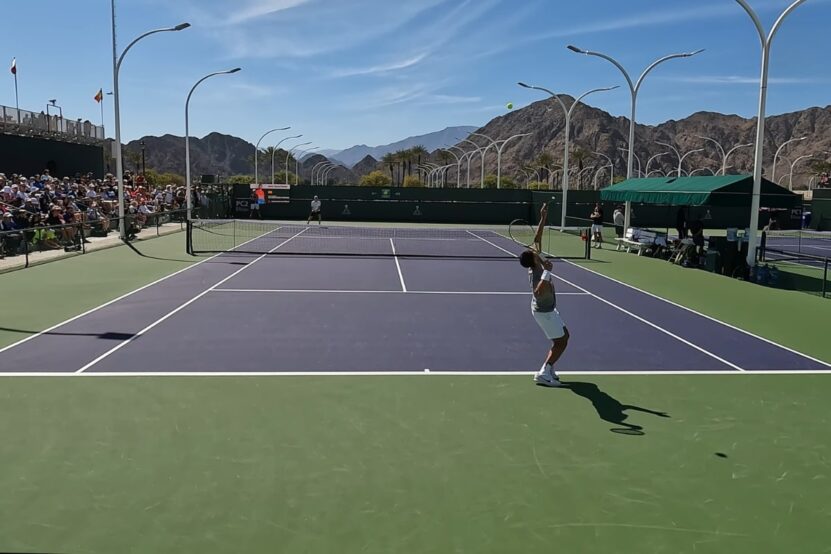
Understanding the impressive speeds achieved by pro tennis players requires a dive into the physics of the sport. How does the interplay of force, momentum, and spin result in such blistering shots?
Force and Momentum
The speed of the tennis ball directly corresponds to the force applied by the player. By using their entire body – from their legs to their core to their arms – players can generate significant force, which, when transferred to the ball, results in high momentum and speed. The racquet’s string tension, the point of impact on the racquet, and the angle of the swing all factor into this equation.
Effect of Spin
Topspin and slice (underspin) are two common spins in tennis, and both can affect ball speed. Topspin, produced by brushing up on the ball, can make the ball dive down faster, often causing it to bounce higher.
Slice, on the other hand, can slow the ball down slightly and make it skid lower on the bounce. While spin can modify the ball’s speed, the initial racquet-ball impact remains the primary determinant of shot velocity.
Impact of Court Conditions on Speed
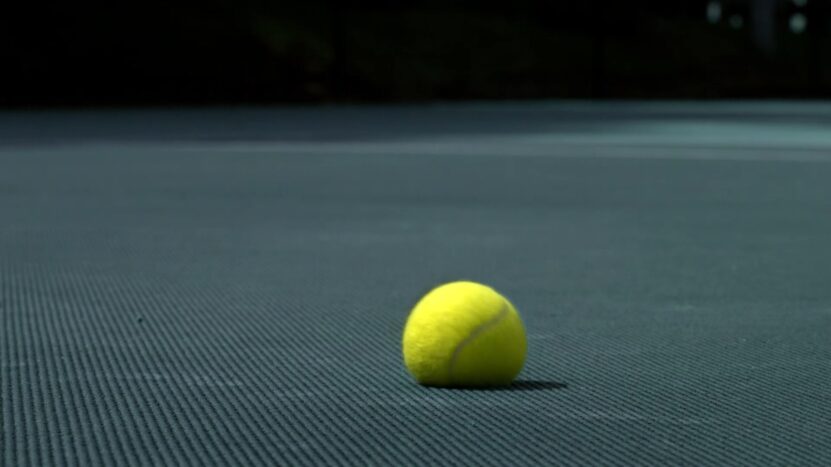
Different surfaces can have a profound impact on how the ball behaves, influencing its speed, bounce, and overall trajectory.
Clay
Clay courts, like those at the French Open, tend to be slower and can reduce the speed of the ball upon bouncing. The surface creates more friction, causing the ball to bounce higher but with reduced forward momentum. This is why powerful baseline players often excel on clay.
Grass
Grass courts, synonymous with Wimbledon, offer the fastest game in tennis. The slick surface means balls skid and stay low, often accelerating after the bounce. Serves and volleys are especially potent on grass due to the speed at which the ball travels.
Hard
Hard courts, such as those at the US Open and Australian Open, are considered medium-paced. However, there can be variations – some can be faster than others. Generally, the ball bounces true on hard courts, and the speed is relatively consistent, making it a balanced surface for various play styles.
Training to Increase Ball Speed
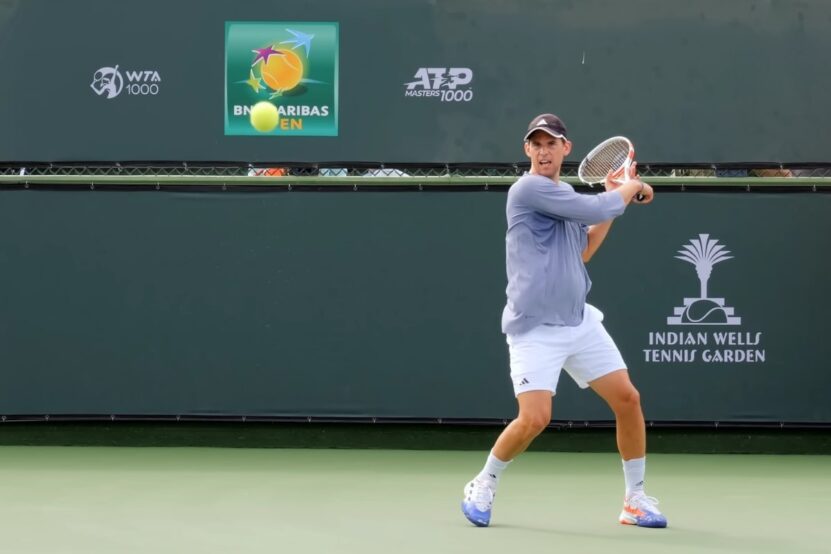
Achieving the impressive ball speeds witnessed in professional tennis matches isn’t just about natural talent. It requires specific training techniques and drills aimed at improving shot power and speed.
Strength and Conditioning
A strong core, powerful legs, and robust arms are essential for hitting fast shots. Plyometrics, weight training, and resistance exercises can help players develop the necessary muscle strength. Agility drills and explosive exercises like box jumps further aid in generating power.
Technical Drills
Tennis pros spend countless hours refining their technique. Drills focusing on the point of contact, swing path, and follow-through can help improve ball speed. Using equipment like speed radar guns can provide instant feedback, allowing players to adjust and fine-tune their strokes.
Mental Preparation
While physical training is vital, the mental aspect of the game can’t be overlooked. Being mentally sharp allows players to time their shots better, anticipate opponent moves, and position themselves optimally. All of these factors contribute to maximizing ball speed during matches.
Comparison with Historical Greats
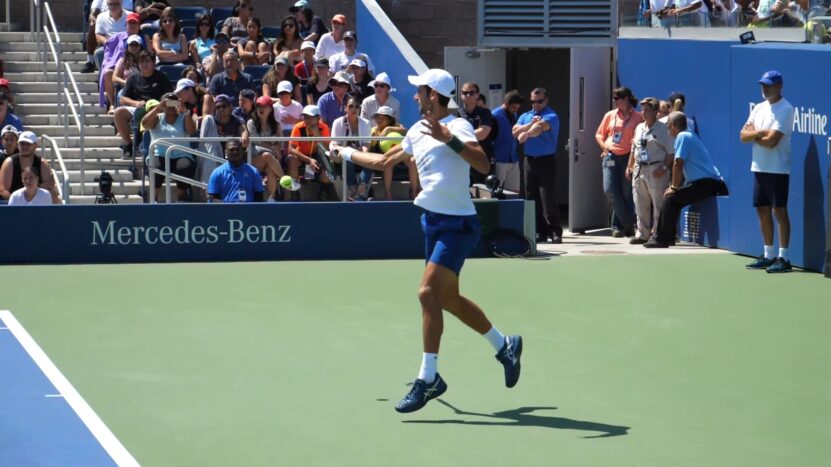
Looking back, tennis has evolved considerably. The racquets, strings, training methods, and even balls have changed. How do the ball speeds of today’s players compare with those of the legends from decades past?
Racquet Evolution
Older racquets, often made of wood, didn’t offer the same kind of power that modern, graphite-composite racquets do. Players from the wood era, like Rod Laver or Bjorn Borg, may not have hit as hard as today’s stars simply due to equipment constraints.
Training Regimens
Today’s players have access to more sophisticated training regimens and sports science.
It ensures they’re at their physical peak, allowing them to generate more force in their shots. Past legends, despite their immense talent, didn’t have the advantage of such advanced training methods.
Equipment’s Role in Ball Speed
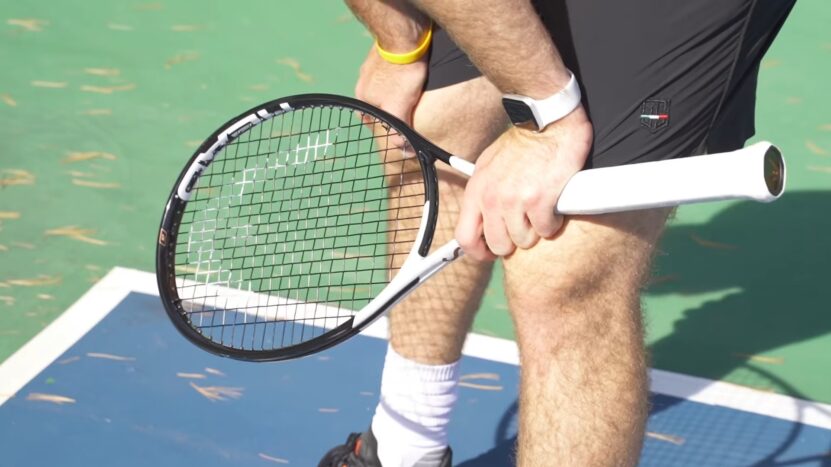
The speed of a tennis ball is not just about the force exerted by the player. The equipment they use plays a significant role in determining how hard and fast they can hit.
Racquet Technology
Modern racquets are designed for power. With larger head sizes, more aerodynamic designs, and innovative materials, these racquets are capable of generating faster ball speeds than ever before. Moreover, customization allows players to have their racquets tailored to their unique styles and strengths.
String Tension and Type
The type of string and its tension can significantly affect ball speed. Looser strings can provide more power (and hence speed) but offer less control, while tighter strings provide more control at the expense of some power.
Additionally, newer polyester strings can generate more spin, affecting the ball’s trajectory and speed after the bounce.
Record-breaking Ball Speeds in Tennis
Throughout tennis history, players have pushed the boundaries of how hard they can hit the ball. Let’s explore some of these record-breaking feats.
Fastest Recorded Serves
The record for the fastest serve in men’s tennis is held by Sam Groth, clocking in at a staggering 263.4 km/h (163.7 mph).
On the women’s side, Kristyna Pliskova holds the record with a serve measured at 225 km/h (140 mph).
These numbers are a testament to the combination of strength, technique, and equipment advancements.
Groundstrokes and Return Speeds
While serves usually steal the limelight when discussing speed, some groundstrokes have been recorded at astonishing speeds.
For instance, Novak Djokovic has hit forehands at speeds nearing 160 km/h (100 mph). These speeds show the potential power even when players aren’t in a controlled serving environment.
FAQs
Does a faster ball speed always mean a better chance of winning points?
Not necessarily. While a faster ball can give opponents less time to react, accuracy and strategy play crucial roles. A ball hit with sheer power but lacking control can lead to unforced errors.
Do men always hit the ball faster than women in tennis?
On average, men tend to have faster serves and groundstrokes. However, this is not a strict rule, and some female players can strike the ball harder than their male counterparts due to superior technique or timing.
How do doubles matches influence ball speed compared to singles matches?
Doubles matches often involve quicker exchanges at the net, which can result in faster reaction shots but not necessarily higher overall ball speeds.
Are there any regulations regarding the type of racquet or string tension for professional matches?
While there are no strict regulations on the type of racquet, there are guidelines on size dimensions. String tension is left to players’ discretion, but it can significantly influence ball speed and control.
Summary
Tennis, often termed the “gentleman’s game”, encompasses so much more than meets the eye.
Ball speed, while just one facet of this multifaceted sport, offers a captivating lens through which to appreciate the game’s evolution, the prowess of its players, and the sheer marvel of human potential when combined with technological advancements.

